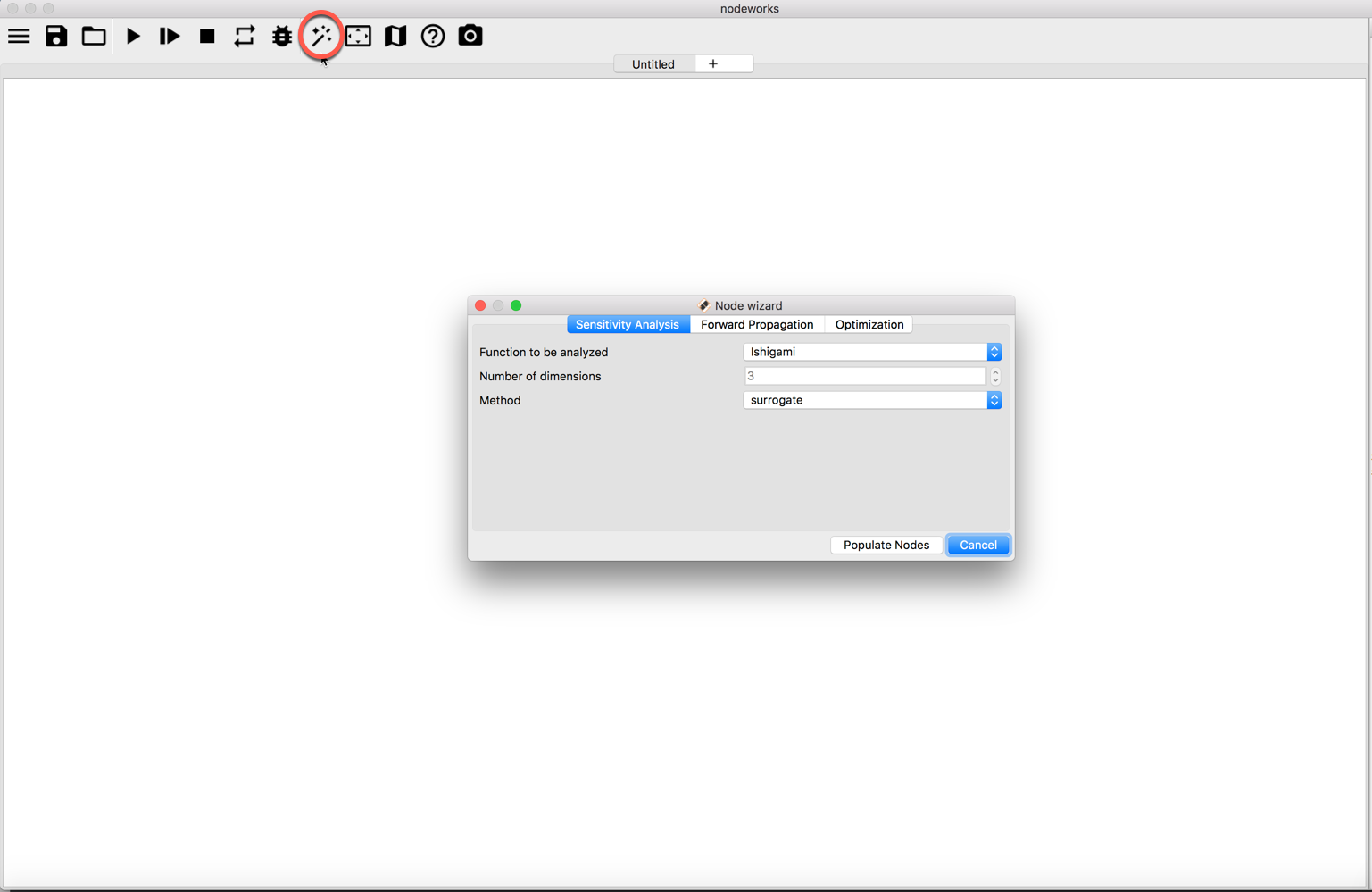Node Wizard¶
Nodeworks offers multiple ways to create specific task oriented workflows. The most basic method
starts from a blank and adds nodes sequentially by selecting each new node from the node menu
which may be accessed by right clicking or directly typing on the worksheet. In an effort to
streamline this process, an automatic prototype workflow construction feature, the Node Wizard,
has been created. The Node Wizard provides several automatically created workflows
for set of SMA tasks such as sensitivity analysis and optimization to assist users with
workflow construction.
Users can activate the Node Wizard feature by clicking the icon
(highlighted by the red circle in the screenshot below) which opens a pop-up
window showing available prototype workflows on separate tabs.

- Currently, the
Wizardoffers three types of prototype workflows: Sensitivity Analysis: Provides an automatically constructed workflow for performing sensitivity analysis.Forward Propagation: Provides an automatically constructed workflow for forward propagation of input uncertainties.Optimization: Provides an automatically constructed workflow for optimization.
The user is requested to make several entries upon selection of the tab for the desired workflow.
First entry is for the selection of the analytical function, which is implemented through
a Code node in lieu of actual model evaluation, (e.g., CFD simulation).
The use of analytical functions facilitates quick and cheap computation of the
quantities of interest for the targeted task. For example, users can select the
commonly used Ishigami function to perform the sensitivity analysis for two input
parameters. Some functions have an arbitrary number of dimensions which must be
specified. Other functions have a fixed number of input parameters.
Other analytical functions offered for sensitivity analysis and forward propagation are Webster,
Borehole and Ergun function. For Optimization task, different set of 13 functions more suitable for
optimization are available such as Rastrigin, Rosenbrock, etc.
Note that users can replace the function evaluation in the workflow
with their desired choice of application. Currently, the only Method available for
evaluation is through a surrogate model.
An animated illustration for the optimization node wizard is provided below:
